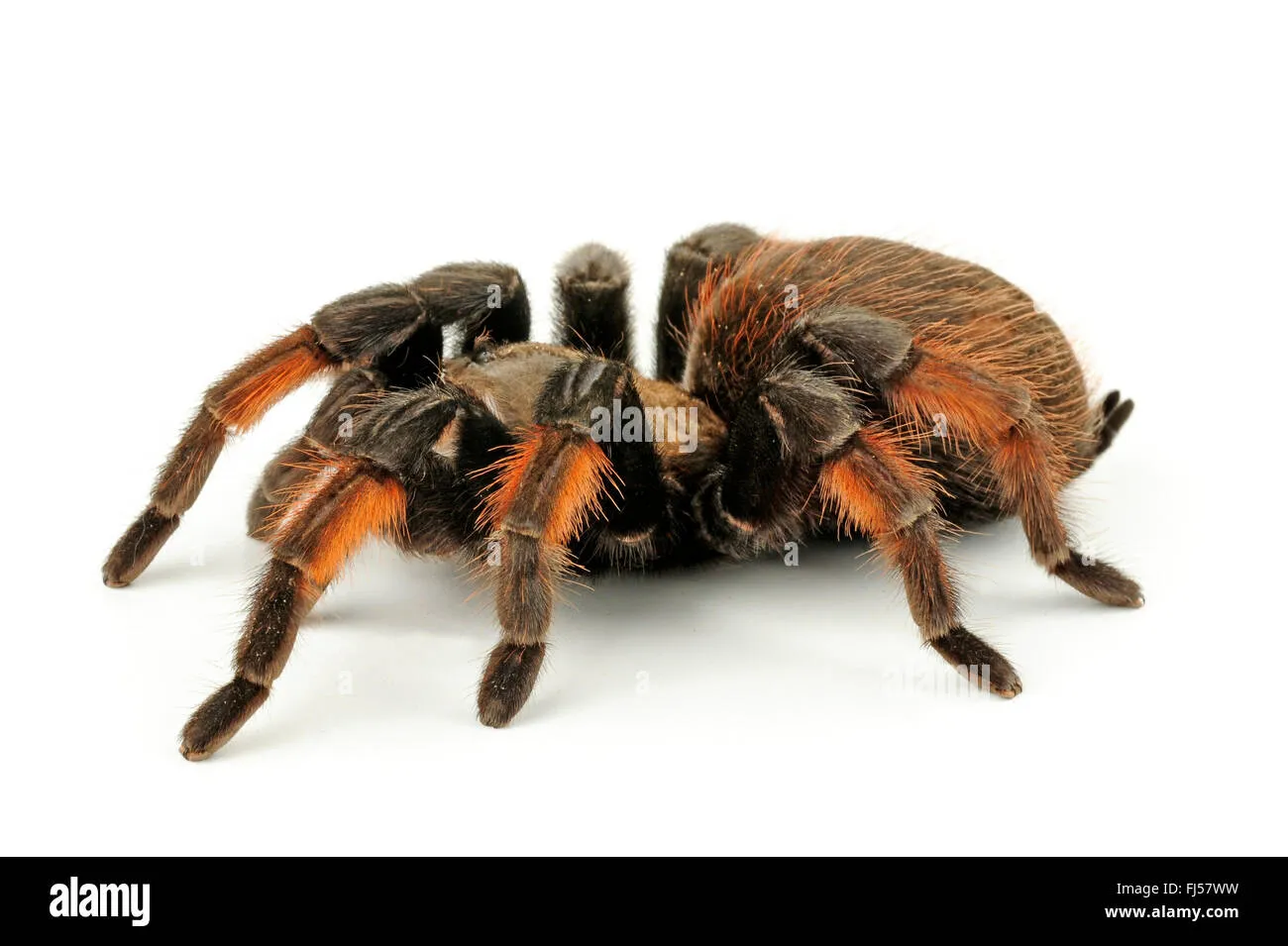The Mexican Redleg Tarantula (Brachypelma vagans) is a popular and relatively docile species, making it a great choice for both novice and experienced tarantula keepers. This comprehensive guide will provide you with all the essential information needed to provide excellent care for your Mexican Redleg Tarantula, ensuring its health, happiness, and longevity. From setting up the perfect habitat to understanding feeding habits and recognizing potential health issues, we’ll cover everything you need to know to become a successful tarantula owner. Proper care is paramount, and with the right knowledge, you can enjoy the fascinating world of these captivating arachnids.
Mexican Redleg Tarantula Habitat
Creating a suitable habitat is the first and most crucial step in caring for your Mexican Redleg Tarantula. This species is terrestrial, meaning it lives on the ground, so its enclosure should reflect its natural environment. The habitat should provide the tarantula with security, adequate space for movement, and appropriate conditions for its well-being. The enclosure’s design should consider aspects like size, substrate, temperature, and humidity to emulate its native environment in Mexico and Central America as closely as possible. A well-designed habitat minimizes stress and promotes natural behaviors, ensuring a healthier and more content pet.
Choosing the Right Enclosure
The enclosure should be made of a material that allows for good ventilation, such as glass or clear plastic. The enclosure should also have a secure lid to prevent escapes. The size of the enclosure should be appropriate for the size of your tarantula. A juvenile Mexican Redleg Tarantula will need a smaller enclosure than an adult. The rule of thumb is that the enclosure should be at least twice as wide as the tarantula’s leg span and about three times its leg span in length. Make sure the enclosure is escape-proof with no gaps. It’s also important to choose an enclosure that is easy to clean and maintain, as regular cleaning is vital for the tarantula’s health.
Enclosure Size and Dimensions
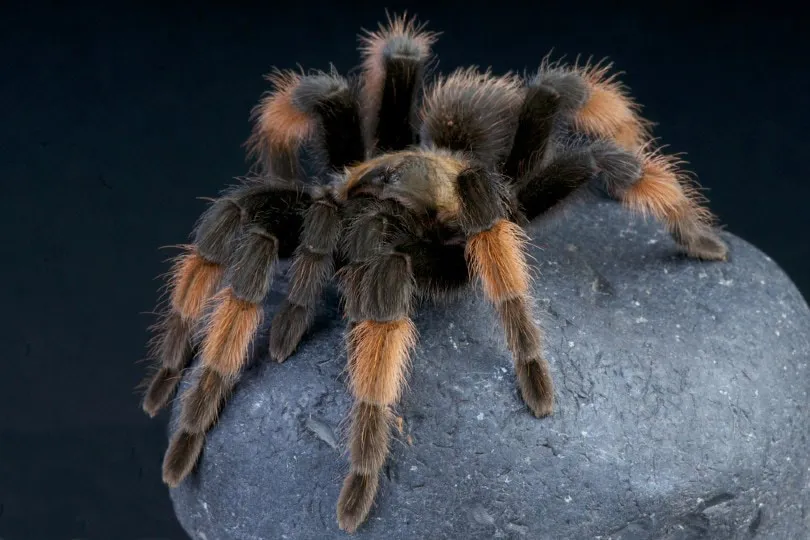
For a juvenile Mexican Redleg Tarantula, an enclosure measuring around 8x8x8 inches is generally sufficient. As the tarantula grows, you will need to upgrade to a larger enclosure. An adult Mexican Redleg Tarantula will thrive in an enclosure that is at least 12x12x12 inches, or even larger. The larger size allows for more space for movement, exploration, and proper molting. Consider the surface area more than the height. While the height isn’t as critical for a terrestrial species, it should be sufficient to prevent the tarantula from climbing and potentially falling, which could be harmful. Ensure the enclosure has adequate ventilation to prevent moisture buildup and promote healthy air circulation.
Substrate Selection for Your Tarantula
The substrate is the material that lines the bottom of your tarantula’s enclosure. The right substrate helps to maintain humidity levels, provides a natural environment for burrowing, and makes cleaning easier. Good options include coco fiber, peat moss, or a mixture of the two. These substrates hold moisture well, which is crucial for maintaining the required humidity. Avoid using substrates like sand or gravel, as these do not hold moisture well and can be difficult to clean. The depth of the substrate should be enough for the tarantula to burrow if it chooses, typically around 4-6 inches for adults. The substrate should also be changed regularly to prevent the buildup of waste and mold.
Creating the Perfect Environment
In addition to the enclosure and substrate, other elements are vital for creating the perfect habitat. Provide a hide, such as a piece of cork bark or a half-log, where your tarantula can retreat and feel secure. This is essential for reducing stress. Add a shallow water dish to provide a constant source of fresh water. You can also add a few live or artificial plants to enhance the natural aesthetic and offer additional hiding places. Decorate the enclosure with elements that simulate the tarantula’s natural environment, such as rocks or branches, to enrich the environment and encourage natural behaviors.
Temperature and Humidity Requirements
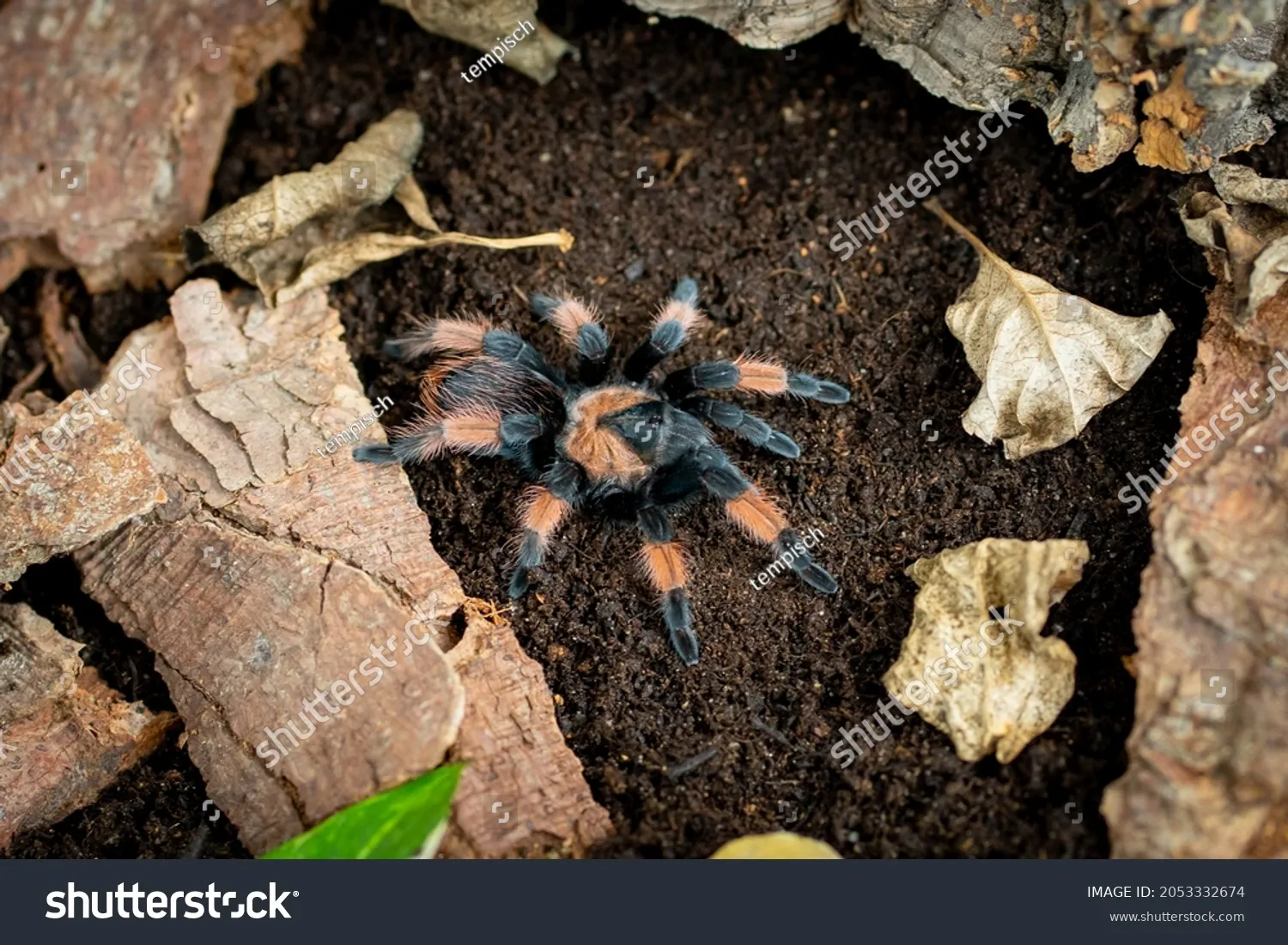
Ideal Temperature Range
Mexican Redleg Tarantulas thrive in temperatures between 75-85°F (24-29°C). It is important to maintain a consistent temperature range to keep your tarantula healthy and active. You can use a heat lamp or a heat mat to provide warmth, but be cautious to avoid overheating the enclosure. Place the heat source on one side of the enclosure to create a temperature gradient, allowing the tarantula to regulate its body temperature by moving to warmer or cooler areas. Use a thermometer to monitor the temperature regularly and make adjustments as needed. Avoid direct sunlight, which can quickly overheat the enclosure and harm the tarantula.
Maintaining Proper Humidity
Humidity is another critical factor in caring for your Mexican Redleg Tarantula. These tarantulas need a humidity level between 60-70%. You can maintain humidity by misting the enclosure with a spray bottle filled with dechlorinated water once or twice a week, depending on the environmental conditions. It is also important to provide a water dish that the tarantula can drink from, which also contributes to the humidity levels. The substrate plays a significant role in regulating humidity; moistening the substrate is one of the primary ways to raise the humidity. Use a hygrometer to measure the humidity levels and make adjustments accordingly. Excessive humidity can lead to mold growth, so proper ventilation is essential.
Mexican Redleg Tarantula Feeding
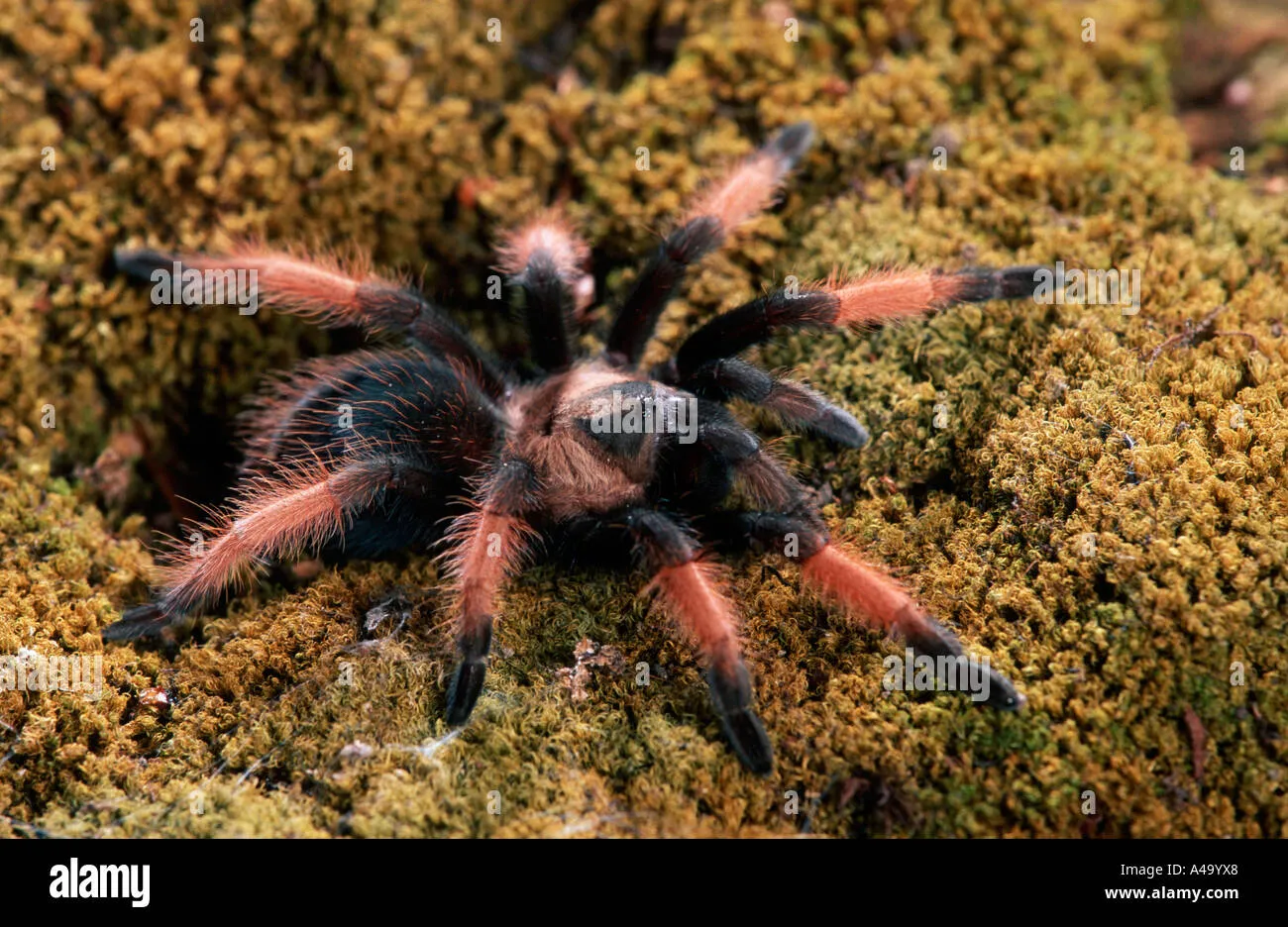
Feeding is a vital aspect of caring for your Mexican Redleg Tarantula. Providing the right food and following an appropriate feeding schedule are essential for the tarantula’s growth, health, and overall well-being. Understanding the nutritional needs of your tarantula will help you make informed decisions about its diet and ensure that it receives all the necessary nutrients. Overfeeding can lead to health problems, while underfeeding can stunt growth and weaken the tarantula. The proper diet and feeding schedule will help the tarantula thrive.
What to Feed Your Tarantula
Mexican Redleg Tarantulas are insectivores, meaning they primarily eat insects. The best food sources include crickets, mealworms, dubia roaches, and other commercially available feeder insects. The size of the food should be appropriate for the size of your tarantula; the general rule is that the insect should be no larger than the tarantula’s body. It is important to gut-load the feeder insects before feeding them to your tarantula. Gut-loading involves feeding the insects nutritious foods, such as fresh vegetables and fruits, which then transfer to the tarantula when it eats the insect. This enhances the nutritional value of the tarantula’s meal.
Feeding Frequency and Portion Sizes
The feeding frequency depends on the tarantula’s age and size. Spiderlings and juveniles should be fed two to three times a week, while adults can be fed once or twice a week. Monitor your tarantula’s abdomen; if it appears plump and round, it is well-fed. If the abdomen is too thin, increase the feeding frequency. Remove any uneaten food within 24 hours to prevent mold and mites. Always ensure fresh water is available in a shallow dish. Avoid overfeeding, which can lead to obesity, and be aware that tarantulas may refuse food when they are close to molting.
Handling and Safety Precautions
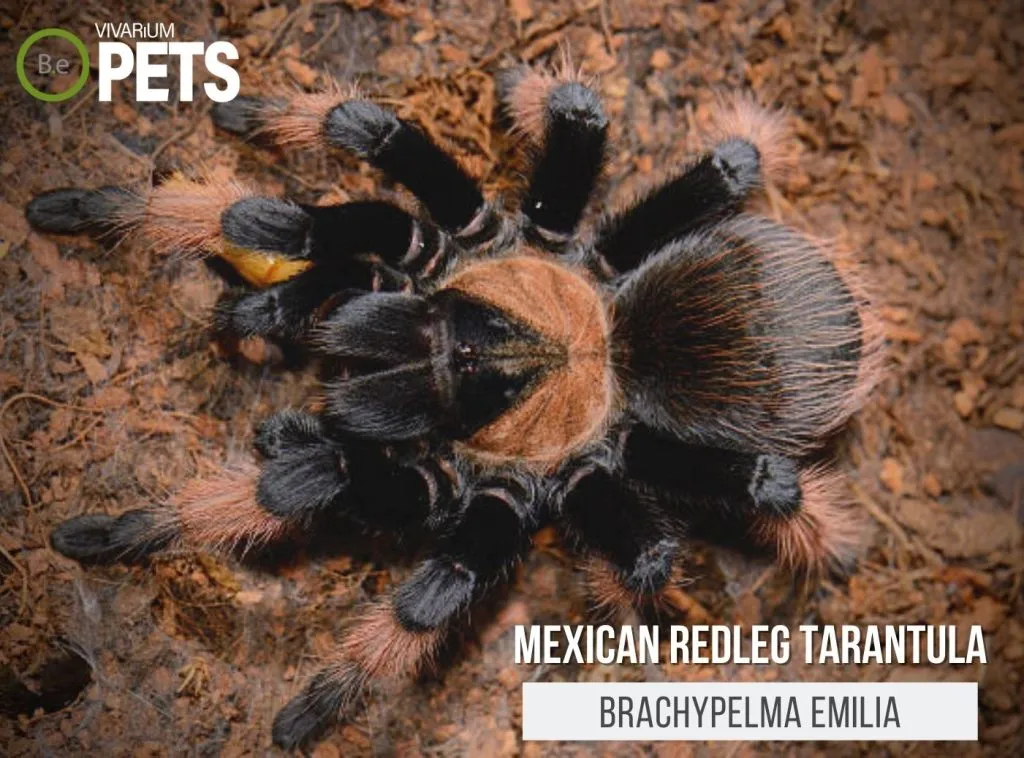
While Mexican Redleg Tarantulas are generally docile, handling them should be done with caution and only when necessary. These tarantulas can bite, and though their venom is not considered medically significant to humans, a bite can still be painful. Handling also carries the risk of dropping the tarantula, which could cause serious injury. It is always best to prioritize the tarantula’s well-being and safety when interacting with it. If you choose to handle your tarantula, it is vital to take appropriate precautions and be mindful of its behavior.
When to Handle Your Tarantula
Handling your tarantula should be kept to a minimum and only done when necessary, such as when moving the tarantula to a new enclosure or for health inspections. It is generally not recommended to handle tarantulas regularly simply for the sake of handling. Observe the tarantula’s behavior to gauge its mood before attempting to handle it. Avoid handling if the tarantula appears stressed, defensive, or is close to molting. It is crucial to respect the tarantula’s boundaries and avoid any actions that could cause undue stress or harm.
Safe Handling Techniques
If you choose to handle your tarantula, do so in a controlled environment, such as over a soft surface like a bed or a carpet, in case it falls. Always wash your hands before and after handling. Gently coax the tarantula onto your hand; never grab or force it. Allow the tarantula to walk onto your open palm slowly. Avoid sudden movements or loud noises that could startle the tarantula. Keep your hands close to the ground to minimize the distance it could fall. Be aware that tarantulas can move very quickly, and be prepared to react if it attempts to escape. If the tarantula appears agitated, gently place it back into its enclosure.
Watering Your Mexican Redleg Tarantula
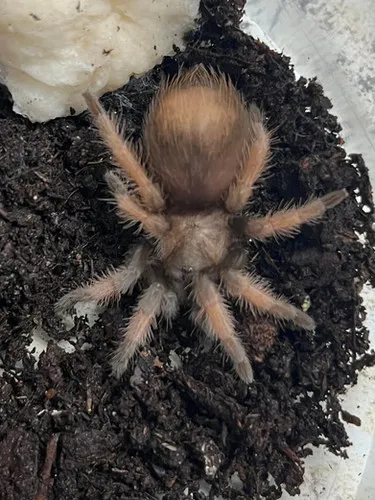
Providing fresh water is essential for the health and well-being of your Mexican Redleg Tarantula. Water helps with the tarantula’s hydration, and it plays a crucial role in maintaining its bodily functions. Dehydration can lead to various health issues, including difficulty molting. It’s a straightforward aspect of care that can have a significant impact on the tarantula’s health and longevity. Regular access to clean water is non-negotiable for any tarantula owner.
Providing Fresh Water
Always provide a shallow water dish with fresh, clean water. The dish should be small enough to prevent the tarantula from drowning but large enough for it to drink comfortably. Use dechlorinated water to avoid any potential harm from chemicals found in tap water. The water dish should be checked and refilled daily, or more often if necessary, to ensure a constant supply of fresh water. Clean the water dish regularly to prevent algae or bacterial growth. The correct water dish is a small investment for the long-term health of the tarantula.
Preventing Dehydration
Besides providing fresh water, you can take additional steps to prevent dehydration. Monitor the humidity levels in the enclosure and adjust them as needed. Ensure the substrate is appropriately moistened to help maintain the required humidity. Observe your tarantula for signs of dehydration, such as a shriveled abdomen or lethargy. If you notice signs of dehydration, increase the misting frequency or offer additional water sources. Avoid placing the enclosure in direct sunlight or near heat sources that could lead to rapid water evaporation. Regular hydration is crucial to support proper bodily functions, molting, and overall health.
Common Health Issues and Solutions
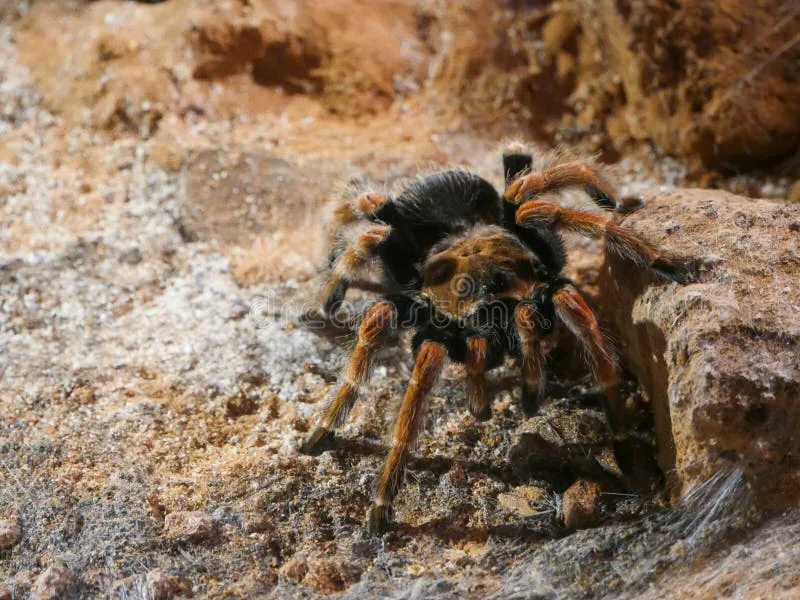
Like all animals, Mexican Redleg Tarantulas can experience health issues. Understanding common problems and how to address them can help you provide the best possible care. Early detection and prompt treatment are vital for preventing serious illness and ensuring your tarantula’s well-being. Familiarizing yourself with these potential health problems will allow you to address them quickly and effectively, improving your tarantula’s chance of recovery and maintaining a healthy environment.
Recognizing Health Problems
Be observant of your tarantula’s behavior and appearance. Some signs of illness include lethargy, loss of appetite, abnormal posture, or changes in the abdomen. Difficulty molting can also indicate a health problem. Other signs to watch for include parasites, such as mites or fungal infections, or physical injuries. If you notice anything unusual, document the changes and consult with a veterinarian specializing in exotic animals or a knowledgeable tarantula expert. Being proactive and vigilant allows for the early detection and timely treatment of health issues.
Treating and Preventing Illnesses
Many health problems can be prevented or treated with proper care. Maintain optimal temperature and humidity levels to prevent infections. Provide a clean and stress-free environment to boost the tarantula’s immune system. Ensure a balanced diet to keep the tarantula strong and resilient. Regularly inspect the enclosure and remove any waste or uneaten food to prevent the build-up of harmful bacteria. Quarantine new tarantulas to prevent the spread of diseases. If you suspect your tarantula is ill, isolate it from other tarantulas and consult with a vet. Seek professional advice promptly, as early intervention often yields the best results.
Mexican Redleg Tarantula Molting
Molting is a natural process in which tarantulas shed their exoskeleton to grow. It is a critical and potentially stressful event that requires special care. Understanding the molting process, including recognizing the signs and providing the right support, is essential for ensuring the health and survival of your Mexican Redleg Tarantula. This cycle is part of their natural life cycle, and careful management is key to ensuring the process goes smoothly.
Understanding the Molting Process
Tarantulas molt periodically as they grow. The frequency of molting depends on their age and growth rate; juveniles molt more frequently than adults. Before molting, the tarantula will typically become less active and may stop eating. The exoskeleton will begin to separate from the new, underlying exoskeleton. The tarantula will often lie on its back during the molting process, gradually pushing its way out of the old exoskeleton. It can take several hours for the tarantula to completely shed the old exoskeleton. After molting, the tarantula’s new exoskeleton is soft and vulnerable, so it’s critical to avoid disturbing it.
What to Do During Molting
During molting, maintain the usual environmental conditions, including the correct temperature and humidity. Avoid disturbing the tarantula or the enclosure during this process. Provide plenty of substrate for the tarantula to flip over and molt in. Do not feed your tarantula until its new exoskeleton has hardened, usually a week or two after molting. After molting, the tarantula will be very vulnerable, so it is important to avoid handling it. If the tarantula has difficulty molting, increase the humidity in the enclosure and ensure there are no obstacles impeding the process. If problems persist, consult a specialist.
Conclusion
Caring for a Mexican Redleg Tarantula is a rewarding experience that requires dedication and knowledge. By following the guidelines in this care guide, you can provide a healthy, stimulating environment for your tarantula to thrive. Remember that each tarantula is an individual, and observing its behavior and needs is essential. With proper care, your Mexican Redleg Tarantula can live for many years, providing you with a fascinating and enriching pet experience. Continuous learning and adaptation will help you improve the quality of life for your tarantula and build a strong bond with these amazing creatures.
